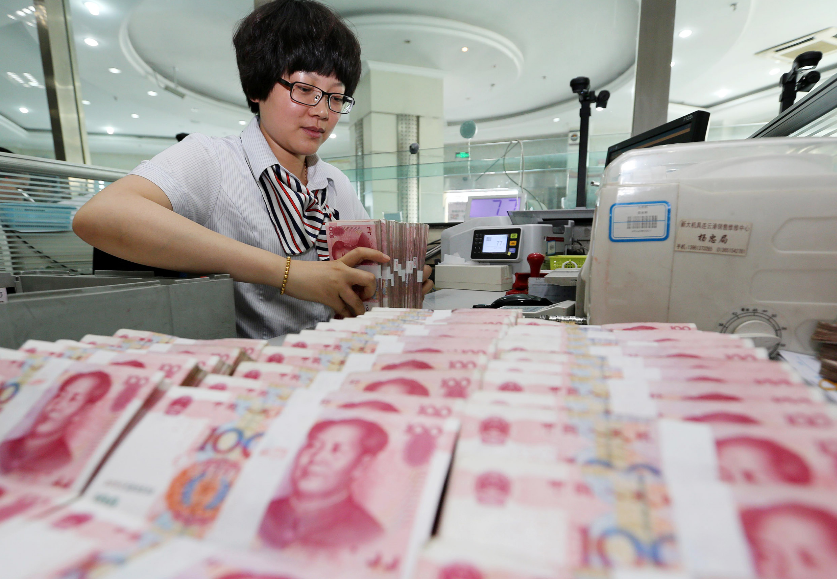BEIJING, Jan. 15 (Xinhua) -- China will prioritize stability in its monetary policy and avoid making sudden shifts in 2021, said Chen Yulu, vice governor of the People's Bank of China (PBOC), the country's central bank, on Friday.
The country's prudent monetary policy will be more flexible, precise, reasonable and moderate in 2021, Chen told a press conference.
China will ensure that the growth of broad money supply and social financing basically matches nominal economic growth, aiming to provide support for economic recovery and high-quality development with moderate money supply growth, he added.
In the face of COVID-19 epidemic impacts in 2020, China continued to implement prudent monetary policy and stayed away from using measures such as quantitative easing, said Chen, adding that it has hedged the high uncertainties of the macro situation since the epidemic and kept the financial operation basically stable.
China will use a comprehensive range of monetary policy tools including reserve requirement ratio, re-lending and rediscount, medium-term lending facility and open market operations to maintain liquidity at a reasonably ample level, Chen said.
He added that the country will give full play to the "drip irrigation" function of monetary policy tools and step up efforts to effectively support the real economy, while providing more financial support to technological innovation, small and micro-sized businesses, and green development.
China's weighted average corporate lending rate was 4.61 percent at the end of 2020, down 0.51 percentage points from the previous year, and the target that financial institutions save enterprises 1.5 trillion yuan (about 232 billion U.S. dollars) was achieved, according to the PBOC.
To bolster the real economy, the central bank introduced the loan extension support tool and credit loan support tool. In 2020, China's banking sector deferred 7.3 trillion yuan of loans repayment and issued a total of 3.9 trillion yuan of the inclusive credit loans for small and micro businesses, an increase of 1.6 trillion yuan year on year, official data showed.
Last year, the PBOC also offered a 300-billion-yuan loan via its re-lending program and a 1.5-trillion-yuan re-lending and rediscounted quota, supporting more than 600,000 enterprises affected by the epidemic, said Chen.
The central bank will strengthen financial support for small and micro-sized businesses in 2021, Chen added.
It will also strive to keep consumer prices stable while preventing big fluctuations in the country's asset prices through macro-prudential policies, Chen said.
He warned against external risks arising from fluctuations in the international financial markets and cross-border capital flow as well as potential increase in debt risks of low-income countries.
Facing these challenges, China will focus on its domestic agenda and strengthen its economic fundamentals while enhancing its ability to forestall systemic risks, Chen said, adding that the country will also strengthen macroeconomic policy coordination with other countries to promote global recovery.
When asked about the trend of RMB exchange rate, Sun Guofeng, head of monetary policy department of the PBOC, told the press conference that two-way fluctuations in the yuan will become normal.
The yuan gained 6.9 percent against the U.S. dollar in 2020, Sun said, adding the exchange rate depends on factors including domestic and foreign economic situations, balance of payments and changes in the international foreign exchange market.
He stressed that the central bank will keep the yuan basically stable at a reasonable and balanced level. Enditem




 A single purchase
A single purchase









